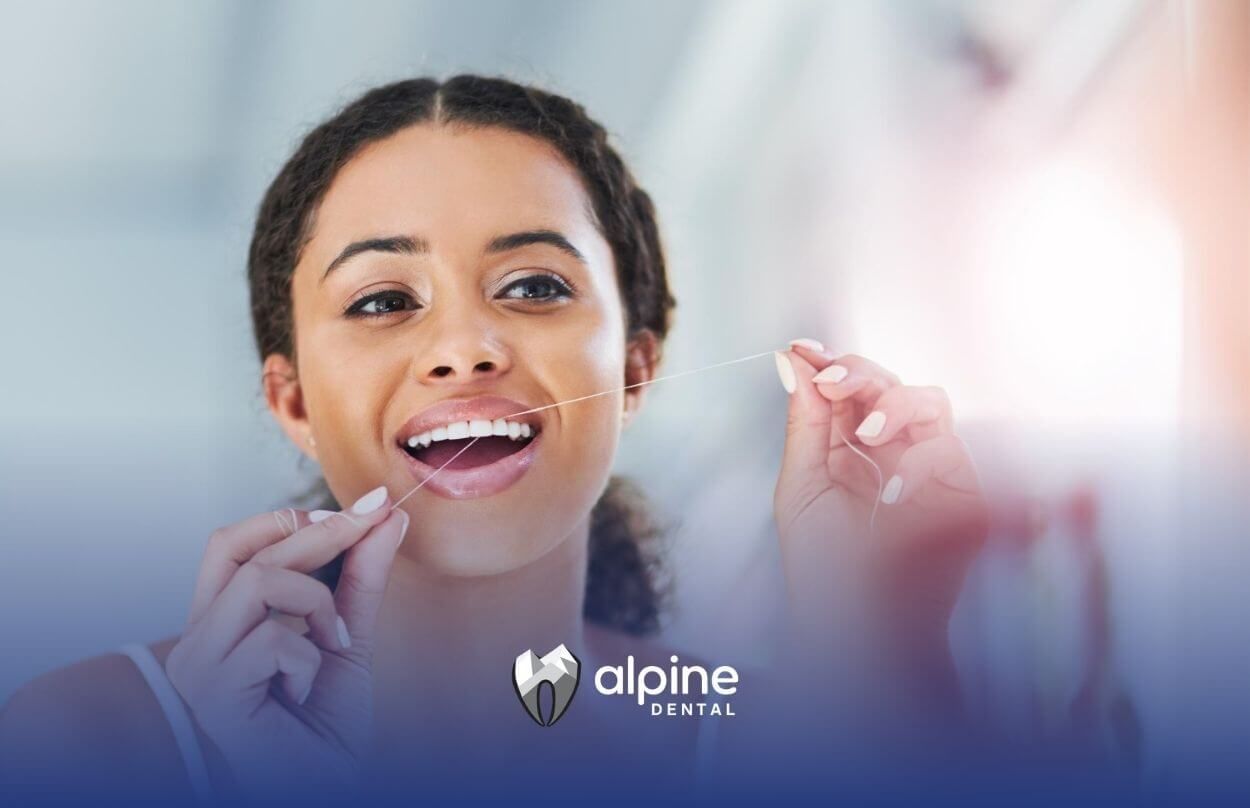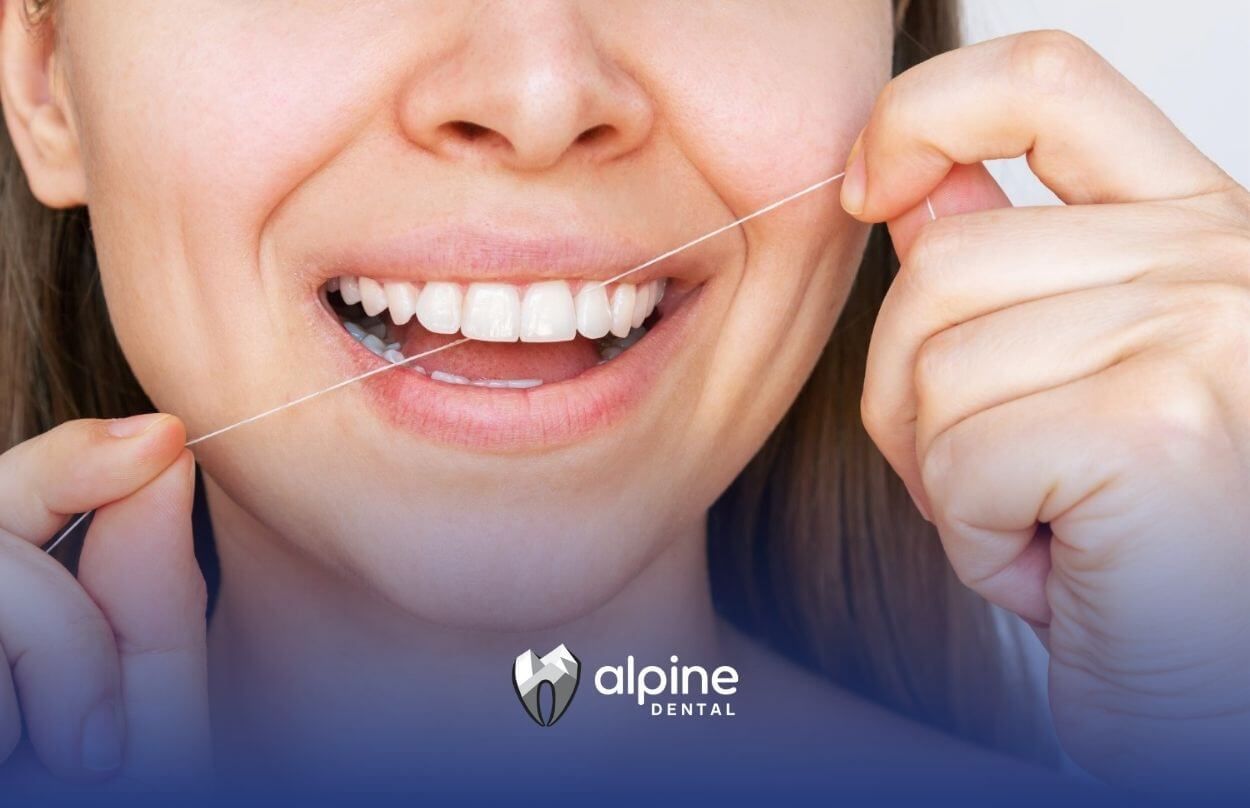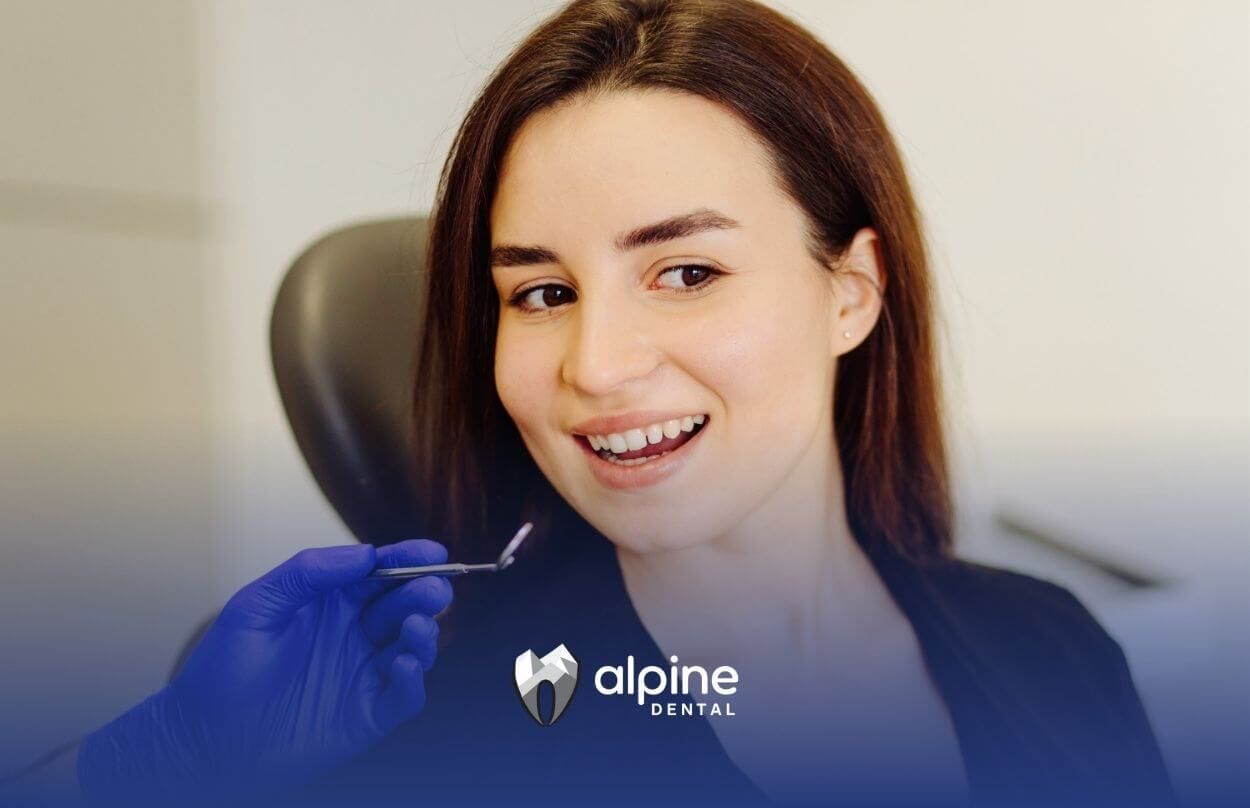Electric vs. Manual Toothbrushes: Which Cleans Best? Alpine Dental’s 2025 Guide
Choosing between electric vs. manual toothbrushes can feel overwhelming. With so many options, features, and claims about which is the best electric toothbrush or best manual toothbrush, how do you know what’s right for your smile?
At Alpine Dental, we’re committed to giving you the facts—no opinions, just evidence-based information—so you can make the best decision for your oral health. This guide breaks down everything you need to know, from cleaning effectiveness and gum health to cost, convenience, and the latest dentist recommendations.
What’s the Difference? Electric vs. Manual Toothbrushes Explained
Electric Toothbrushes
Electric toothbrushes use battery-powered motors to move the brush head rapidly, either oscillating, rotating, or vibrating. Most models feature built-in timers, pressure sensors, and multiple cleaning modes. The best electric toothbrush can provide thousands of brush strokes per minute, far more than manual brushing.
Manual Toothbrushes
Manual toothbrushes are the traditional, non-powered brushes most people grew up with. They come in various bristle types, head shapes, and handle designs. The best manual toothbrush is simple, affordable, and effective when used with proper technique.
Cleaning Power: Which Removes More Plaque?
Multiple studies and systematic reviews have compared electric vs. manual toothbrushes for plaque removal. Research shows that electric toothbrushes, especially those with oscillating-rotating heads, remove more plaque and reduce gingivitis more effectively than manual brushes over time.
A comprehensive review found that electric toothbrush users had an 11% reduction in plaque after one to three months and a 21% reduction after three months or more compared to manual users.
When used correctly, manual toothbrushes can be just as effective at maintaining oral health. The key is proper technique and brushing for the recommended two minutes, twice a day. However, manual brushing relies heavily on user skill and consistency.
Gum Health: Are Electric Toothbrushes Better for Gums?
Electric toothbrushes have been shown to improve gum health by reducing gingivitis and slowing the progression of periodontal disease. Long-term studies indicate that electric toothbrush users experience healthier gums and retain more teeth compared to manual users. Some models include gum care or massage modes to further support gum health.
Manual toothbrushes can also support gum health if used gently with soft bristles, but improper technique or excessive pressure can cause gum recession or irritation.
Features and Technology: What Makes the Best Electric Toothbrush Stand Out?
The best electric toothbrush models in 2025 offer advanced features, such as:
- Pressure sensors: Alert you if you’re brushing too hard, protecting gums and enamel.
- Timers and quadrant guides: Ensure you brush for the full two minutes and cover all areas of your mouth.
- Multiple cleaning modes: Options for sensitive teeth, whitening, gum care, and more.
- Bluetooth/app connectivity: Track your brushing habits and receive real-time feedback for better technique.
- Easy brush head replacement reminders: Maintain optimal cleaning performance.
These features help users achieve consistent, thorough cleaning and protect against common brushing mistakes.
Simplicity and Control: The Case for the Best Manual Toothbrush
Manual toothbrushes offer:
- Full control: Users can adjust pressure and technique easily.
- Affordability: Lower upfront and replacement costs compared to electric models.
- Portability: No batteries or charging required—ideal for travel and convenience.
- Wide variety: Many shapes, sizes, and bristle types to suit personal needs.
The best manual toothbrush typically has soft bristles, a comfortable grip, and a head size that fits your mouth for effective cleaning.
Cost Comparison: Upfront and Long-Term
| Factor | Electric Toothbrushes | Manual Toothbrushes |
|---|---|---|
| Upfront Cost | Higher (device + initial brush head) | Low (single brush) |
| Replacement Cost | Moderate (brush heads every 3 months) | Low (replace entire brush every 3 months) |
| Long-Term Maintenance | Lower after initial investment | Consistent, low cost |
| Battery/Charging | Required (rechargeable or replaceable batteries) | Not required |
Accessibility and Ease of Use
Electric toothbrushes are especially helpful for:
- People with limited dexterity: The powered motion does most of the work, making it easier for individuals with arthritis or mobility issues to clean effectively.
- Children and teens: Fun features and ease of use can encourage better brushing habits.
- Consistent cleaning: Built-in timers and sensors help users brush thoroughly every time.
Manual toothbrushes are:
- Lightweight and simple: No need for charging or batteries.
- Always ready to use: No risk of running out of power.
- Widely available: Easy to find at any store or pharmacy.
Environmental Impact: Sustainability and Waste
- Electric toothbrushes: Require batteries, chargers, and periodic replacement of plastic brush heads. Some premium models offer recyclable heads or sustainable packaging, but overall, they generate more electronic waste.
- Manual toothbrushes: Entirely plastic models are common, but biodegradable bamboo options are increasingly available. Disposing of a full brush every three months adds up, but eco-friendly choices can reduce impact.
What Dentists and Studies Say
Professional Recommendations
- Dentists often recommend electric toothbrushes for patients who struggle with manual dexterity, have a history of
gum disease, or want extra help maintaining good oral hygiene.
- Manual toothbrushes are still a valid choice, especially for those who use proper technique and brush consistently.
Key Study Findings
- Electric toothbrushes reduce plaque and gingivitis more effectively over time.
- Manual toothbrushes can be equally effective if used correctly, but require more attention to technique and thoroughness.
- No single toothbrush is universally best—the most important factor is consistent, proper use.
Choosing the Best Electric Toothbrush: Top Picks for 2025
Here are some of the best electric toothbrushes recommended by dental professionals and expert reviewers in 2025:
| Model | Key Features | Best For |
|---|---|---|
| Oral-B iO Series 10 | Smart pressure sensor, real-time app feedback, oscillating + micro-vibrating | Tech lovers, premium care |
| Philips Sonicare 9900 Prestige | Adaptive intensity, pressure sensor, app connectivity, multiple modes | Sensitive gums, customization |
| Oral-B Pro 1000 | Affordable, brush timer, oscillating head, ADA-accepted | Value, simplicity |
| Philips Sonicare 4100 | Lightweight, sonic cleaning, long battery life | Travel, everyday use |
| Aquasonic Black Series | Multiple brush heads, affordable, multiple modes | Families, budget |
These models are frequently cited as the best electric toothbrush options for their cleaning power, features, and value.
Choosing the Best Manual Toothbrush: Top Picks for 2025
Top-rated manual toothbrushes focus on bristle quality, handle comfort, and effective cleaning:
| Model | Key Features | Best For |
|---|---|---|
| Oral-B Pro-Flex Stain Eraser | Removes surface stains, gentle on enamel, flexible head | Whitening, sensitive teeth |
| Curaprox CS 5460 Ultra Soft | Extra-soft bristles, compact head, non-slip handle | Gum sensitivity |
| Oral-B Pro Health Soft Toothbrush | Angled, rounded bristles, comfort grip | Everyday cleaning |
| Colgate 360° Advanced Optic White | Soft bristles, tongue cleaner, ergonomic handle | All-in-one cleaning |
| Nimbus Extra Soft Toothbrush | Ultra-soft bristles, gentle cleaning | Sensitive gums |
The best manual toothbrush is the one you’ll use consistently and correctly, with soft bristles and a comfortable design.
How Alpine Dental Can Help
At Alpine Dental, we believe that choosing the right toothbrush is just the beginning of your oral health journey. Here’s how we support you beyond the brush:
- Personalized Recommendations: Our team evaluates your unique needs—whether you’re considering electric vs. manual toothbrushes, have sensitive gums, or want the best electric toothbrush for your smile.
- Hands-On Demonstrations: Not sure how to use your new brush? We provide in-person guidance and technique tips during your visit.
- Comprehensive Dental Services: From preventive cleanings to advanced restorative care, we offer a full spectrum of dental services in New Jersey to keep your smile healthy year-round.
- Cutting-Edge Technology: We stay up-to-date with the latest dental innovations, so you get the benefit of evidence-based advice and modern care.
- Ongoing Support: Our team is always available to answer your questions about the best manual toothbrush, brushing technique, or any other oral health concern.
Ready to experience the Alpine Dental difference? Schedule your visit and discover how our expertise can help you achieve your healthiest, brightest smile.
Conclusion: Your Next Steps to a Healthier Smile
Whether you choose an electric or manual toothbrush, the most important factor is using it correctly and consistently. Both can help you achieve excellent oral health, but electric toothbrushes offer extra features that can make brushing easier and more effective for many people. If you’re still unsure which is right for you, Alpine Dental is here to help.
Give your toothbrush a checkup, too! Bring your current brush—electric or manual—to your next Alpine Dental appointment, and we’ll give you a personalized brushing assessment and recommendations. Your smile deserves expert care—book your visit now and let’s make every brush count!
Frequently Asked Questions (FAQs)
Are electric toothbrushes better for gums?
Studies show that electric toothbrushes, especially those with oscillating-rotating heads, can reduce gingivitis and improve gum health more effectively than manual brushes. Built-in pressure sensors and gum care modes help protect sensitive tissue.
Do dentists recommend an electric or manual toothbrush?
Dentists recommend both electric and manual toothbrushes, depending on your needs. Electric brushes are often suggested for people with limited dexterity, a history of gum disease, or those seeking extra help with thorough cleaning. Manual brushes are effective when used with proper technique and consistency.
What is the disadvantage of using an electric toothbrush?
Electric toothbrushes have higher upfront costs, require charging or battery replacement, and generate more electronic waste. Some users may find them bulky or noisy. However, their advanced features can outweigh these drawbacks for many people.
Does using an electric toothbrush really make a difference?
Scientific studies confirm that electric toothbrushes can remove more plaque and reduce gum disease more effectively than manual brushes over time. However, the most important factor is consistent, proper brushing—regardless of the type of toothbrush you choose.
Sources:
- https://www.oralb.co.uk/en-gb/oral-health/why-oral-b/electric-toothbrushes/manual-vs-electric-toothbrush
- https://www.consumerreports.org/health/toothbrushes/electric-toothbrush-or-manual-a3193343159/
- https://orthodonticsaustralia.org.au/electric-or-manual-toothbrush/
- https://www.straight.com/guides/health/best-manual-toothbrushes/
- https://www.healthline.com/health/dental-and-oral-health/electric-toothbrush-vs-manual
- https://www.bbc.co.uk/programmes/articles/1Krpmggd5YLTSLzqgwMFfZB/is-an-electric-toothbrush-the-best-way-to-clean-your-teeth
- https://www.bustle.com/wellness/best-manual-toothbrushes
- https://www.cnet.com/health/personal-care/best-electric-toothbrush/
- https://www.stuff.tv/features/best-electric-toothbrush/
- https://www.livescience.com/best-electric-toothbrushes
- https://pmc.ncbi.nlm.nih.gov/articles/PMC3459492/
- https://www.colgate.com/en-my/oral-health/selecting-dental-products/are-electric-toothbrushes-better-than-manual-toothbrushes




